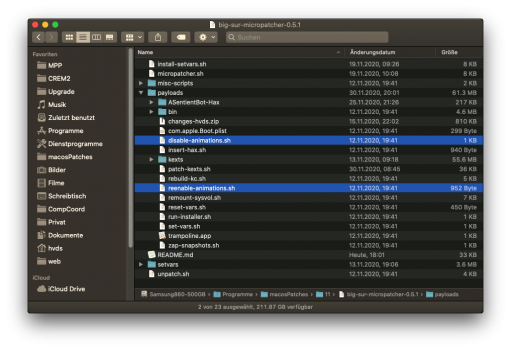I was thinking to install 11.2 on my iMac. I have downloaded the 12GB file and created the USB installer. I see that @Ausdauersportler micropatcher 0.5.3 has an option to install a preconfigured opencore in USB by using install-opencore.sh instead of install-setvars.sh.
At the moment I don’t use opencore since my GPU is flashed with a vBIOS and I can have the native boot picker if I hold option during boot.
What would be the benefit of opencore in my system? Will I be able to use OTA in the future to install 11.3 when it becomes available?
If I choose to install opencore could I still boot my iMac without the USB and insert it only if I need an OTA update?
With my current system if I reset PRAM I have to insert the patched USB and select EFI Boot to be able to boot again. Is this option available (EFI Boot) with the opencore installation on the same USB? What should I do after a PRAM reset to be able to boot again without the USB?
I read that after installation we have to run config-opencore.sh. Do we run this after patch-kexts.sh or instead of patch-kexts.sh?
At the moment I don’t use opencore since my GPU is flashed with a vBIOS and I can have the native boot picker if I hold option during boot.
What would be the benefit of opencore in my system? Will I be able to use OTA in the future to install 11.3 when it becomes available?
If I choose to install opencore could I still boot my iMac without the USB and insert it only if I need an OTA update?
With my current system if I reset PRAM I have to insert the patched USB and select EFI Boot to be able to boot again. Is this option available (EFI Boot) with the opencore installation on the same USB? What should I do after a PRAM reset to be able to boot again without the USB?
I read that after installation we have to run config-opencore.sh. Do we run this after patch-kexts.sh or instead of patch-kexts.sh?


